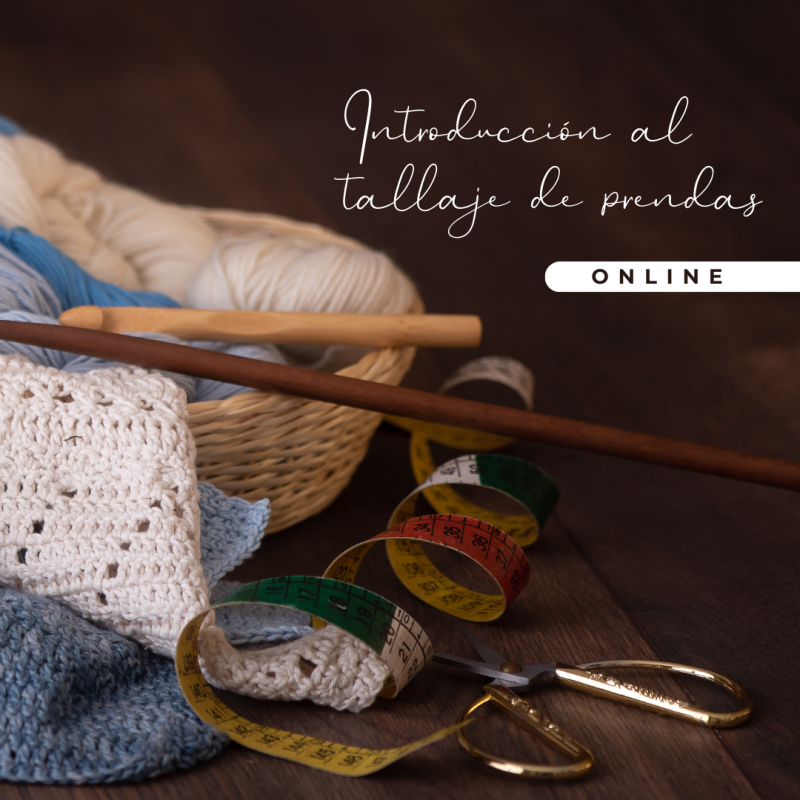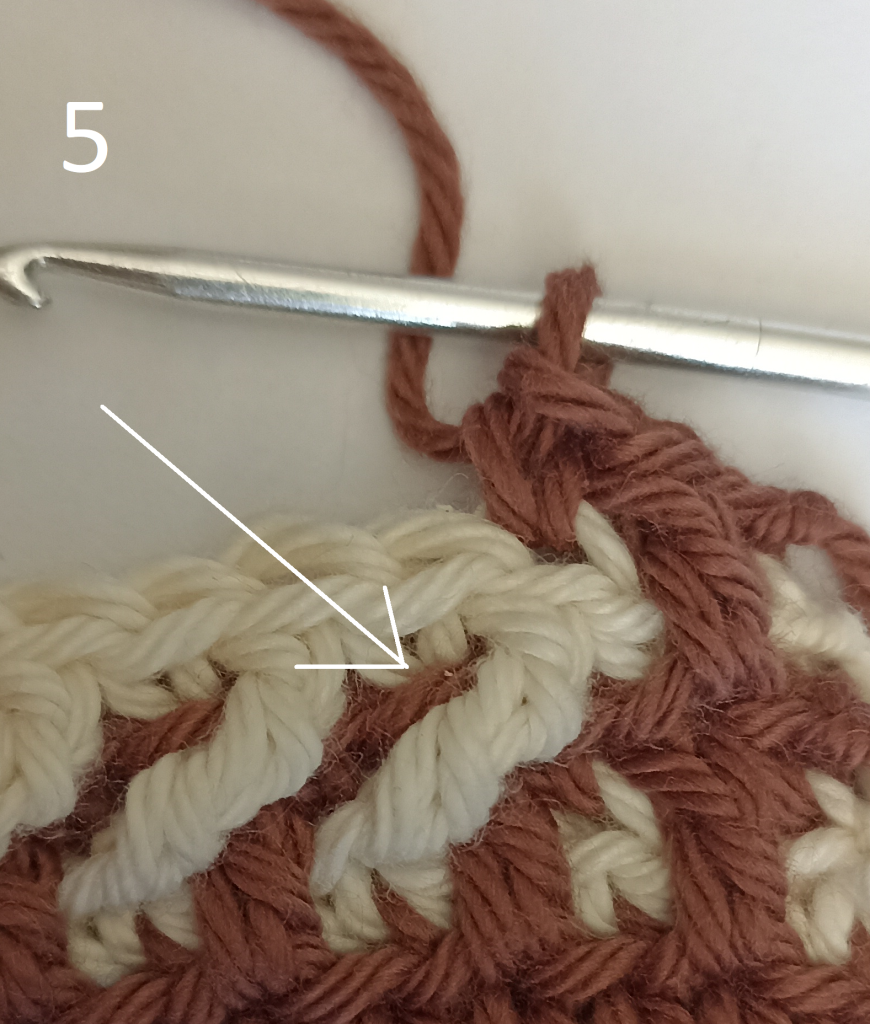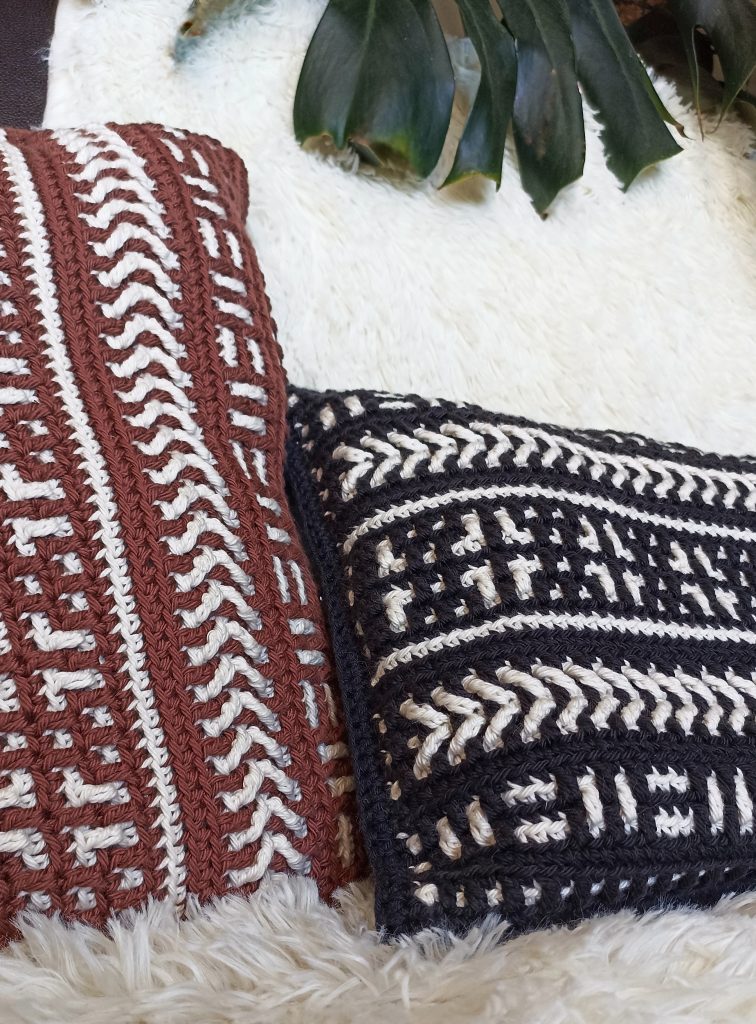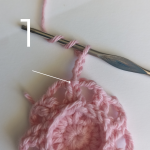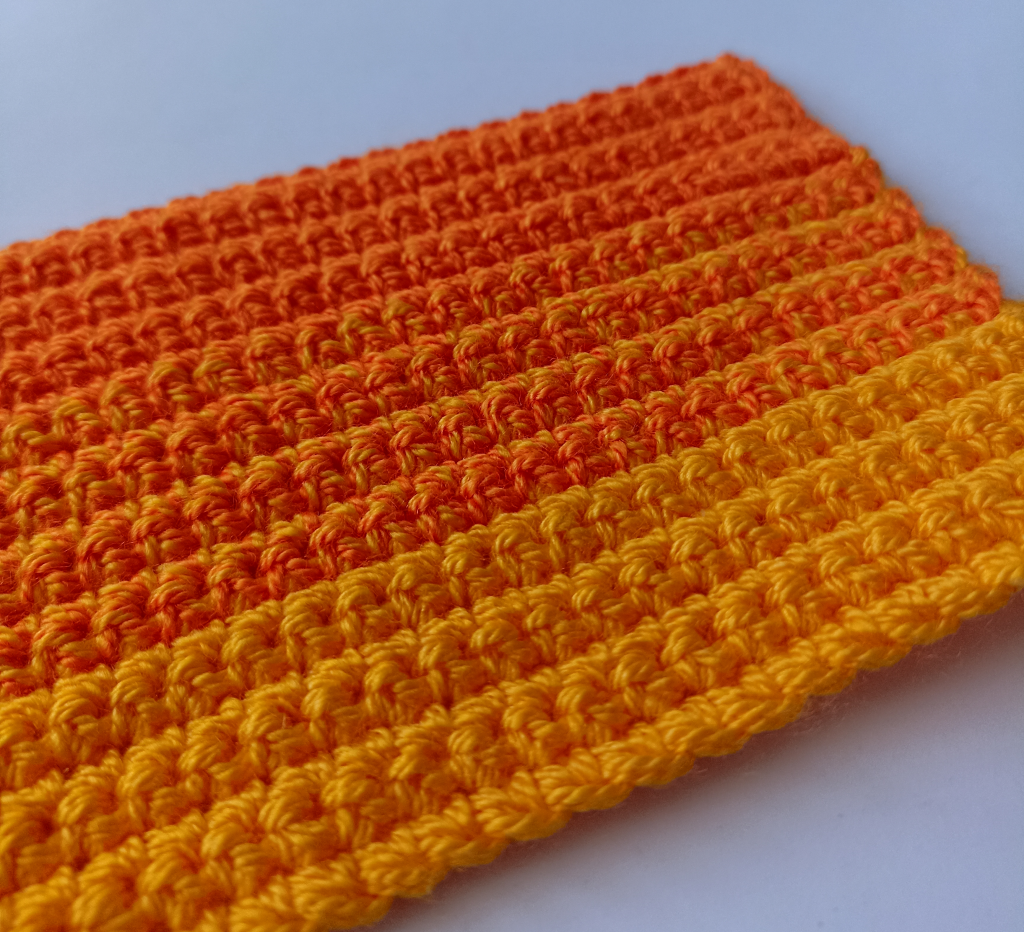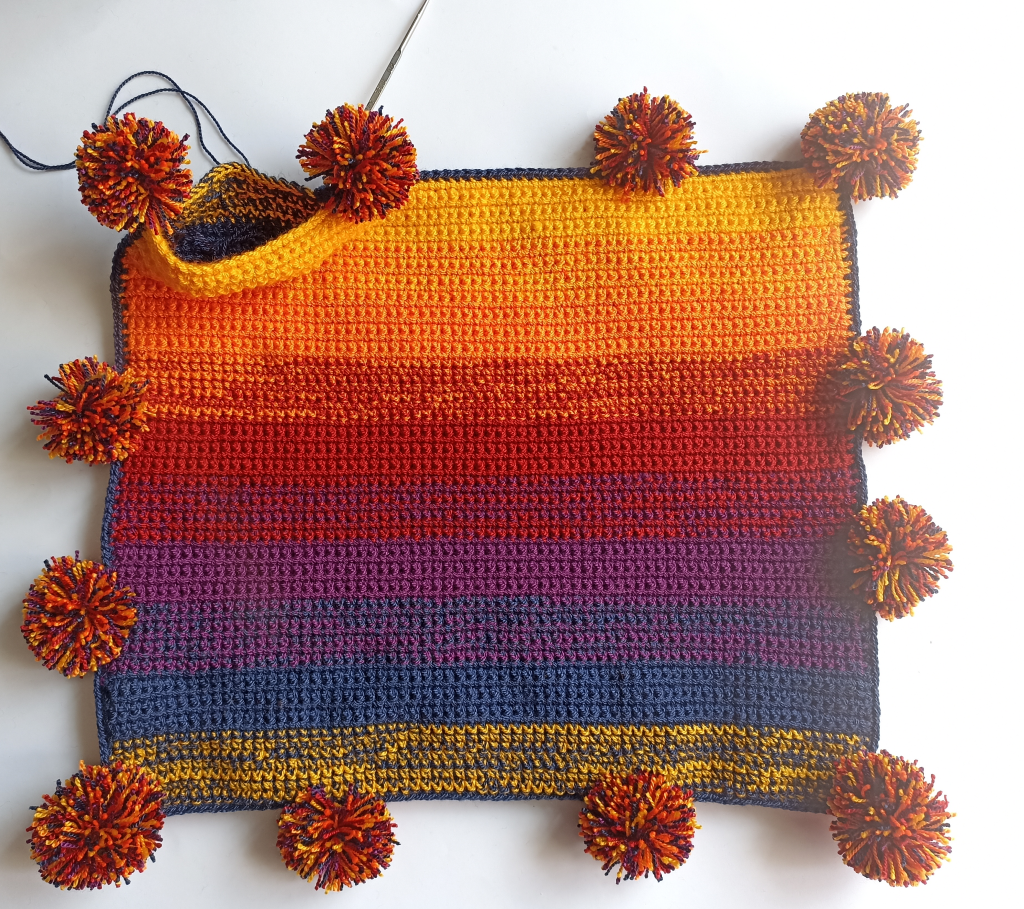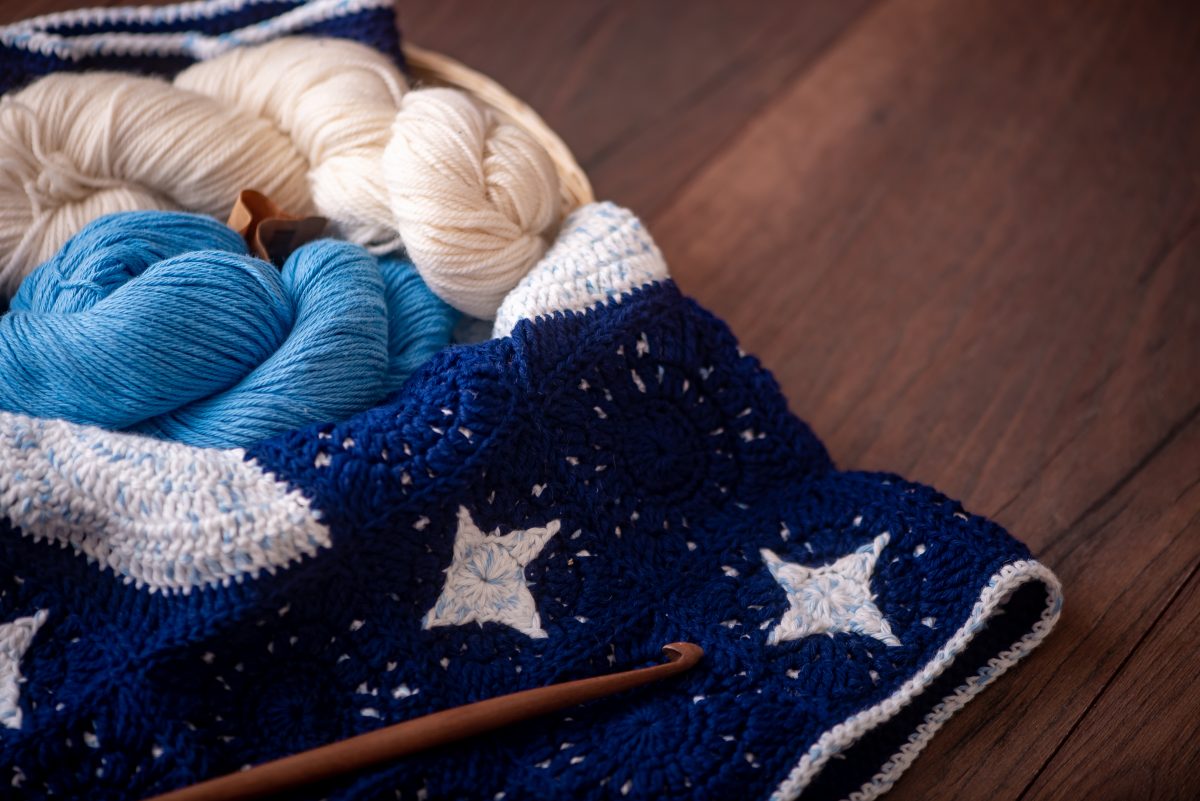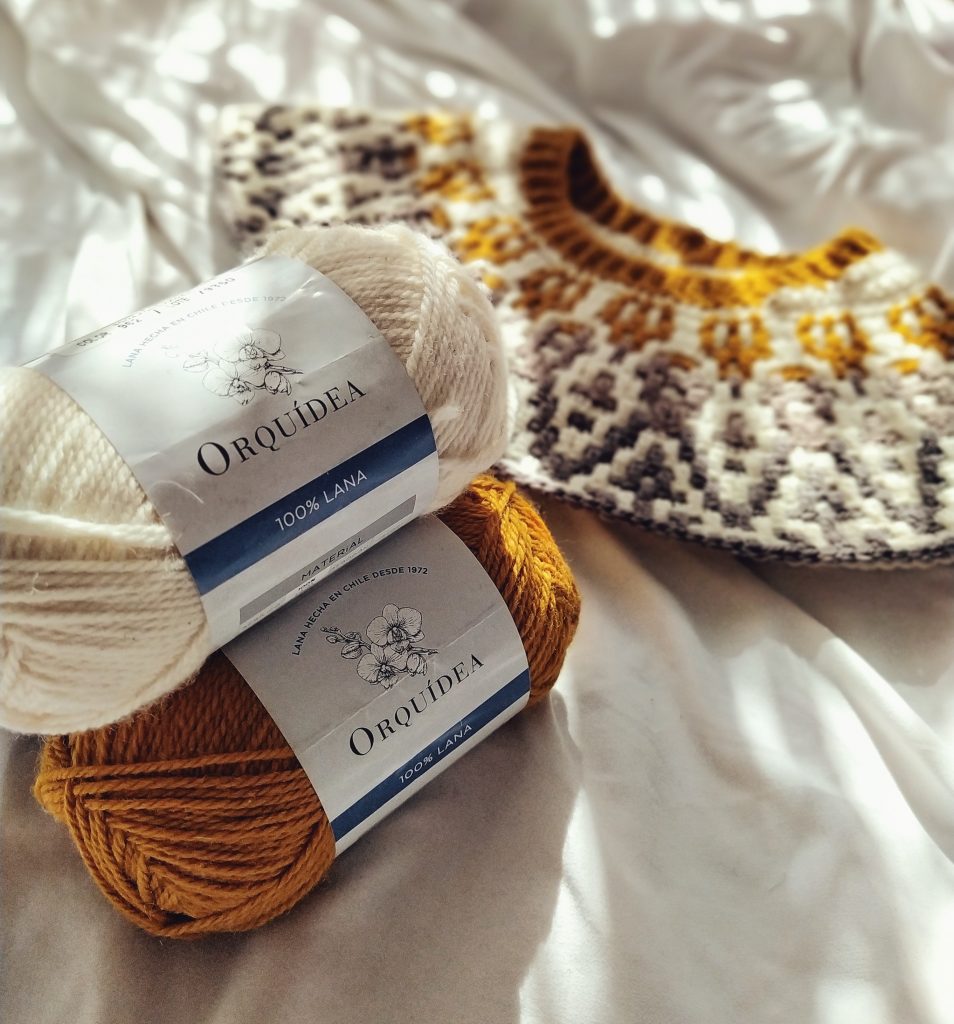Work a magic ring
Rnd1, RS: C1. Ch2 (count as dc), 15dc, sl st in second ch to join. 16 sts
Rnd2, RS: C2. Ch1 (does not count as st), 1sc, *ch2, skp 1dc, 2sc in next st, rep from* 6 more times, ch2, skp next st, 1dc in first st sc made, sl st to join, turn. [8grs of ch2, 8 grs of inc sc]
Rnd3, WS: C2. Ch1 (does not count as st), sc in sc, *ch2, sk next 2ch, sc in next 2 dc, rep from* 6 more times, ch2, skp next 2ch, 1sc in last sc, sl st to join, turn. [8grs of ch2, 16 sc]
Rnd4, RS: C1. Ch1 (does not count as st), *ch2, skp next sc, 1dc in dc from rnd1 which is not crocheted, 2sc in next sc, rep from* 7 more times, sl st to join, turn. [8 dc/ 8grs of ch2/ 8grs of 2sc]
Rnd5, WS: C1. Ch1 (does not count as st), *sc in next 3 sts, ch2, skp next 2ch, rep from* 7 more times, sl st to join, turn. [8grs of 2ch/ 24 sc]
Rnd6, RS: C2. Ch1 (does not count as st), *1dc in sc from rnd3 which is not crocheted, 2sc in next sc, sc in next sc, ch2, sk next st, rep from* 7 more times, sl st to join, turn. [8dc/ 8grs of 2sc/ 8 grs of 2ch/ 8sc]
Rnd7, WS: C2. Ch1 (does not count as st), *ch2, skp next 2ch, sc in next 4sts, rep from* 7 more times, sl st to join, turn. [8grs of 2ch/ 32sc]
Rnd8, RS: C1. Ch1 (does not count as st), 2sc in next sc, sc in next 2sts, ch2, sk next sc, 2dc in sc from rnd 5 which is not crocheted, rep from* 7 more times, sl st to join, turn. [ 16dc/ 8grs of ch2/ 16 sc/ 8 grs of 2sc]
Rnd9, WS: C1. Ch1 (does not count as st), sc in next 2 dc, *ch2, skp next 2ch, sc in next 2sts, rep from* 6 more times, ch2, skp next 2ch, sc in next 4sts, sl st to join, turn. [48 sc/ 8grs of ch2]
Rnd10, RS: C2. Ch1 (does not count as st), sc in next 3sts, *ch2, skp next sc, 2dc in sc from rnd7, 2sc in next sc, sc in next 4sc, rep from* 6 more times, ch2, sk next sc, 2dc in sc from rnd7, 2sc in next sc, 1sc in next sc, sl st to join, turn. [16 dc/ 8 grs of 2sc/ 32 sc]
Rnd11, WS: C2. Ch1 (does not count as st), sc in next 5 sts, *ch2, skp next 2ch, sc in next 8 sts, rep from* 6 more times, ch2, skp next 2ch, sc in next 3sts, sl st to join, turn. [8grs of 2ch/ 64sc]
Rnd12, RS: C1. Ch1 (does not count as st), sc in next 2 sts, *ch2, skp next sc, 2dc in sc from rnd9, sc in next 7 sts, rep from* 6 more times, ch2, skp next sc, 2dc in sc from rnd9, sc in next 5sts, sl st in first ch to join, turn. [16 dc/ 8grs of 2ch/ 56sc]
Rnd13, WS: C1. Ch1(does not count as st), sc in next 7sts, *ch2, skp next 2ch, sc in next 9sts, rep from* 6 more times, ch2, skp next 2ch, sc in next 2 sts, sl st to join, turn. [8grs of 2ch/ 72sc]
Rnd14, RS: C2. Ch1 (does not count as st), 1sc in next st, *ch2, sp next sc, 2dc in sc from rnd 11, sc in next 8 sts, rep from* 6 more times, ch2, sk next sc, 2dc in sc from rnd11, sc in next 7 sts, sl st to join, turn. [16 dc/ 8grs of 2ch/ 64 sc]
Rnd15, WS: C2. Ch1 (does not count as st), sc in next 9 sts, *ch2, skp next 2ch, sc in next 10 sts, rep from* 6 more times, ch2, skp next 2ch, sc in next sc, sl st to join, turn. [8grs of 2ch / 80sc]
Rnd16, RS: C1. Ch1 (does not count as st), ch2, skp next sc, 2dc in sc from rnd 13, sc in next 9 sts, rep from* 7 more times, sl st to join, turn. [16 dc/8grs of 2ch/ 72sc]
Rnd17, WS: C1. Ch1 (does not count as st), *sc in next 11 sts, ch2, skp next 2ch, rep from* 7 more times, sl st to join, turn. [8 grs of 2ch, 88 sc]
Rnd18, RS: C2. Ch1 (does not count as st), *2dc in sc from rnd15, sc in next 10 sts, ch2, skp next sc, rep from* 7 more times, sl st to join, turn. [16dc / 8grs of ch2/ 80sc]
Rnd19, WS: C2. Ch1 (does not count as st), *ch2, skp next 2ch, sc in next 12 sts, rep from* 7 more times, sl st to join, turn. [8grs of ch2 / 96sc]
Rnd20, RS: C1. Ch1 (does not count as st), *sc in next 11 sts, ch2, skp next sc, 2dc in sc from rnd17, rep from* 7 more times, sl st to join, turn. [16 dc/ 8grs of 2ch/ 88 sc]
Rnd21, WS: C1. Ch1 (does not count as st), sc in next 2dc, *ch2, skp next 2ch, sc in next 13 sts, rep from* 6 more times, ch2, skp next 2ch, sc in next 11 sts, sl st to join, turn. [8grs of ch2/ 104 sc]
Rnd22, RS: C2. Ch1 (does not count as st), sc in next 10 sts, *ch2, skp next sc, 2dc in sc from rnd 19, sc in next 12 sts, rep from* 6 more times, ch2, skp next sc, 2dc in sc from rnd 19, sc in next 2 sts, sl st to join, turn. [16dc /8grs of 2ch/96sc]
Rnd23, WS: C2. Ch1 (does not count as st), sc in next 4 sts, *ch2, skp next 2ch, sc in next 14 sts, rep from* 6 more times, ch2, skp next 2ch, sc in next 10 sts, sl st to join, turn. [8grs of ch2 /112sc]



